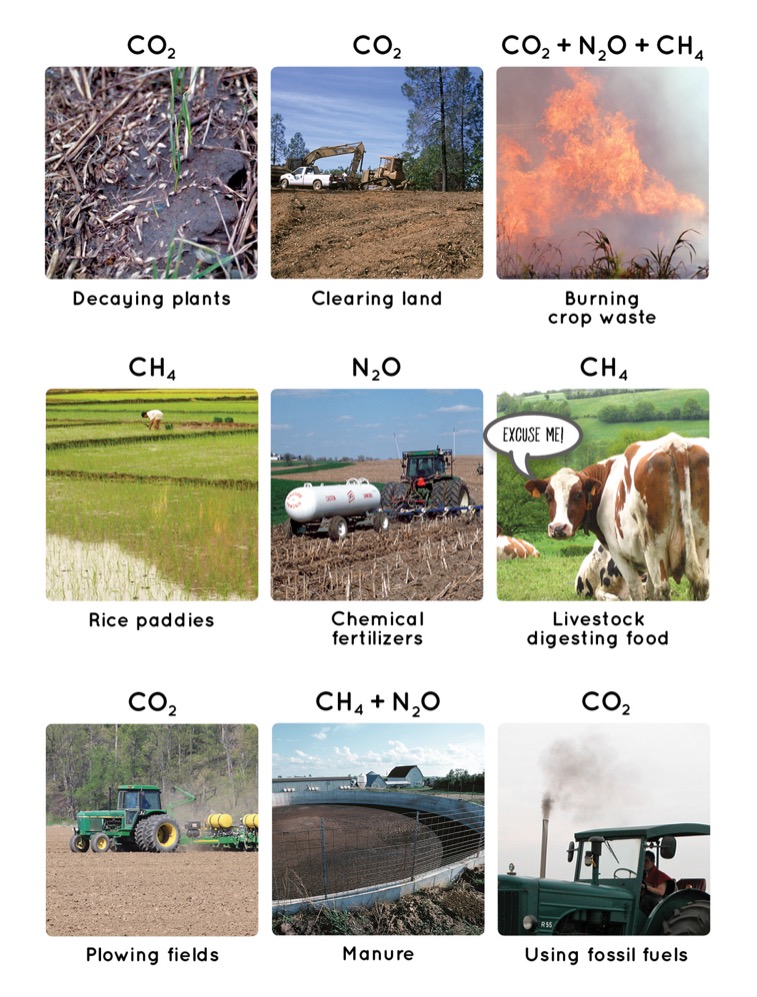What is the Greenhouse Effect?
It is a layer of naturally occurring gases – carbon dioxide (CO2), methane (CH4), nitrous oxide (N2O) and water vapor (H2O)- which helps trap some of the sun’s heat. Otherwise our planet would freeze.
Here’s how it works:
- Incoming energy from the sun (solar radiation) penetrates the atmosphere. Earth’s land, oceans, and lower atmosphere absorb most of the incoming energy. As a result, Earth’s surface warms.
- In turn, the warmed surface releases heat back to the atmosphere in the form of infrared radiation.
- Greenhouse gases absorb some of the infrared radiation and send it back to Earth’s surface. That causes temperatures to rise.
- Higher levels of greenhouse gases correspond to higher global temperatures.
Sources of Greenhouse Gases from human activity are:
- Energy Supply 26%
- Industry 19%
- Forestry 17%
- Agriculture 14%
- Transportation 13%
- Residential and Commercial Buildings 8%
- Waste and wastewater 3%
How does agriculture generate greenhouse gases?
Agriculture removes CO2 from the atmosphere, storing it in crops, pastures, and soil. That helps to reduce climate change. Agricultural activities also result in the emission of CO2 and other greenhouse gases that contribute to the greenhouse effect.


